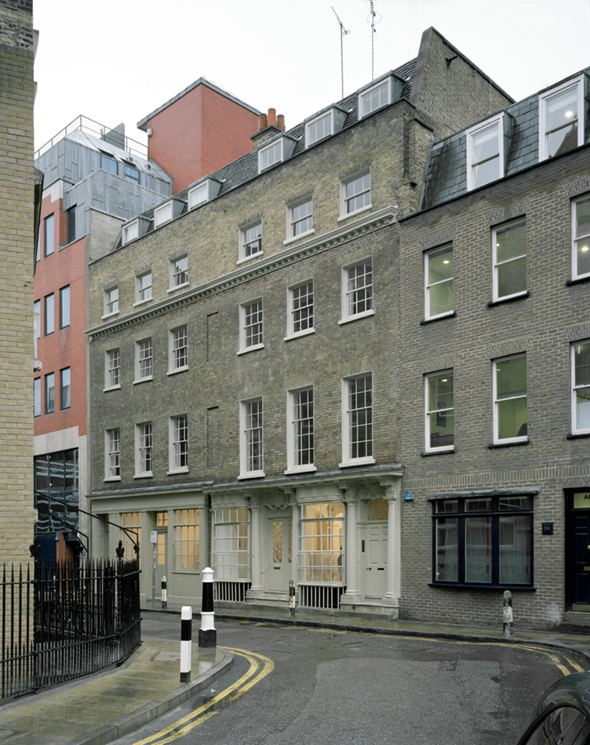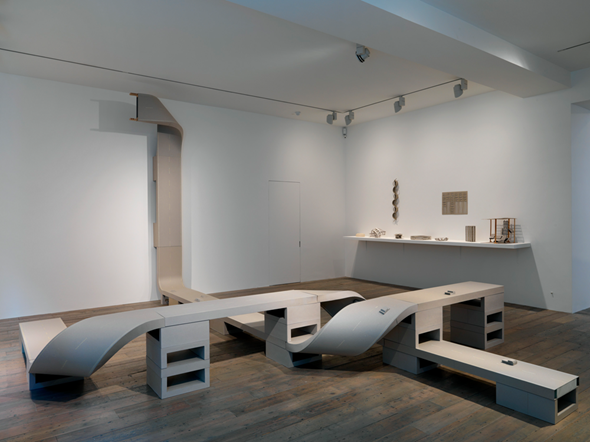Escape from the White Cube

Like being underway in a private house open to the public, Raven Row is an exceptional exhibition space in East London, which was opened by collector ALEX SAINSBURY. By DANIEL BAUMANN.
»I have a huge respect for the market – it is the principle generator of visual culture – but at the same time it’s interesting to see what art can do outside of that context. This space can do something that commercial spaces cannot.« Alex Sainsbury
Until the 80s, contemporary art was imparted by a few galleries, collectors, »kunsthallen«, critics, as well as by the artists themselves. With the economic boom, new protagonists, interests and consumers appeared on the scene, and roles and correlations previously perceived as constant fell into confusion. Today, big galleries don’t play on the level of »kunsthallen« as in the 90s, but rather have arrived at the echelon of museums: Gagosian’s historical shows are measured against those at the MoMA. Collectors are no longer just lenders, but build spectacular museums and want to be responsible for innovative exhibitions. Auction houses run galleries, (Sotheby’s Haunch of Venison), art impresarios like Jeffrey Deitch become museum directors, trustees determine the exhibition programs of institutions. Ideally, this is always a way of facilitating new ways of interacting with art. Traditional institutions supported by public sector funds are a step behind these developments, which is understandable to a certain degree since they are bound to a complex, long-term contract with society, while in the past few years, creating a grand entrance took the fore. However in its shadow, some, also wealthy, people have begun to look for alternatives and create spaces in which the focus is on art, its logic and its possibilities.
Alex Sainsbury is one of these people. The son of the owner of the eponymous British chain of supermarkets, a little over a year ago, Sainsbury founded the exhibition space Raven Row in London. He opened with the first comprehensive UK presentation of legendary American artist Ray Johnson, who was also highly regarded and collected by Andy Warhol, thus establishing Raven Row as a serious exhibition space. This was followed by a show featuring Thomas Bayrle, Ann Lislegaard and Ultra-red, a three-way presentation about the translation of social and psychological realities into the language of art. The third exhibition was devoted to Scottish artist Eduardo Paolozzi, in particular to his very politically oriented work for the British art and literature magazine Ambit. After the last exhibition presented the work of German filmmaker Harun Farocki, focusing on his multiple projections, the latest exhibition A History of Irritated Material has a quite bold line-up, starting with Group Collective and the Moscow art collective Inspection Medical Hermeneutics, to the Cannabis Gallery by 75 year old Swede Sture Johannesson, to Ad Reinhardt and the activist films from the Disobedience video archive.
Raven Row’s program doesn’t allow itself to be classified easily, however one can recognise an interest in the complex and not always simple relationship between art, archive, politics and activism. The exhibition space can be found in Artillery Lane, a narrow street in London’s East End which until the end of the 19th century was called »Raven Row«. The building was constructed in 1690 and has undergone various conversions, so that more intimate rooms now alternate with larger ones, and an apartment house staircase leads to the upper floors. It’s as if one were walking around a private house made public, and that is precisely what makes it such a pleasure to come here: to have escaped the ›white cube‹ and to be able to see art in another context.
Of course, this is not the only reason, nor is it simply the quality of the exhibitions; it is the obvious interest in art beyond the convention of petrified spectacle, a stance that can be discerned in apparently absurd details. At Raven Row, the writing on the wall is finely painted by hand, the pencil lines are still visible. Today, something like that makes a world of difference, and makes one actually take the following mission statement seriously: »Raven Row will exhibit diverse work of the highest quality, often by established international artists, or those from the recent past, who have somehow escaped London’s attention. However, the programme will remain improvisatory and un-dogmatic, and the qualities that might constitute Raven Row’s success, its ›cultural value‹, will remain open to question.«
Translated by Peter Waugh
DANIEL BAUMANN is an independent curator and critic. He lives in Basel.

photo: David Grandorge

Courtesy Galerie Barbara Weiss, Berlin, photo: Marcus J Leith
